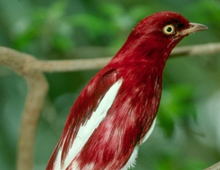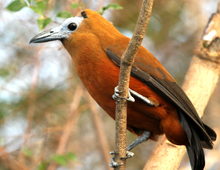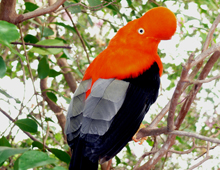
Male Guianan cocks-of-the-rock are bright orange birds with large, orange, half-moon crests on their heads. This edge of the crest is lined with a brown band. The crest remains erect and covers the bill. They have black and white wing bars and black on their tails. The bill, legs, and skin are orange as well. Females are a drab brown color. Their bill is black with a yellow tip and they have a smaller crest than the males.






